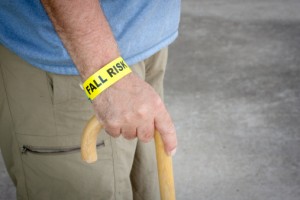 Spinal cord injuries are among the most traumatic personal injuries because they often have lasting and serious repercussions. A recent study by the Johns Hopkins School of Medicine suggests that such injuries are becoming more common, emphasizing the need to be aware of the causes and potential risk factors.
Spinal cord injuries are among the most traumatic personal injuries because they often have lasting and serious repercussions. A recent study by the Johns Hopkins School of Medicine suggests that such injuries are becoming more common, emphasizing the need to be aware of the causes and potential risk factors.
The study, recently published in the Journal of Neurotrauma, updated the numbers on spinal cord injury risks. According to the study, officials had been using a figure of 40 traumatic spinal cord injuries (TSCI) per million people annually, which was based on figures from the 1990s. After an analysis of more recent data, the researchers estimated the annual incidence of TSCI among adults is now 56.4 per million.
The National Institutes of Health explains that spinal cord injuries typically begin with an impact that fractures or dislocates one of the many small bones (vertebrae) that make up the spinal column. Most of these injuries don’t cut through the nerves in the spinal cord (though that is possible), but instead put pressure on them or cause tears.
Spinal cord injuries are classified as either “complete” or “incomplete.” A complete spinal cord injury is one that disrupts the signals from the brain so significantly that the victim can’t move or feel anything below the injury site. In other words, the victim is paralyzed. An incomplete spinal cord injury may disrupt movement or sensation, but the victim maintains some level of control below the injury.
Spinal cord injuries may happen in a variety of situations. Car accidents, according to the National Spinal Cord Injury Statistical Center (NSCISC), account for 36.5 percent, falls account for 28.5 percent, sports injuries account for 9.2 percent, violence for 14.3 percent and other causes for 11.4 percent.
The Johns Hopkins study says the rate of spinal cord injuries is rising in older Americans. This coincides with the rising rate of such injuries attributed to falls. Falls are a relatively common problem among the elderly and one that can increase the risk of an early death.
The Centers for Disease Control and Prevention (CDC) estimates 1 in 3 adults age 65 and older fall each year. These accidents are the leading cause of injuries – both fatal and nonfatal – in the elderly.
Despite an aging population, the NSCISC says young adults remain the group most at risk for spinal cord injuries. But the average age is increasing. From 1973 to 1979, the average age of spinal cord injury victims was 28.7. The average age has now risen to 42.6. Men account for nearly 81 percent of such injuries.
Researchers on the Johns Hopkins study say age-specific prevention strategies are necessary. As the average age of victims is climbing, it is even more apparent that older Americans need to be protected from falls and their potentially lethal outcomes, whether they live independently, with family or in a nursing home.
